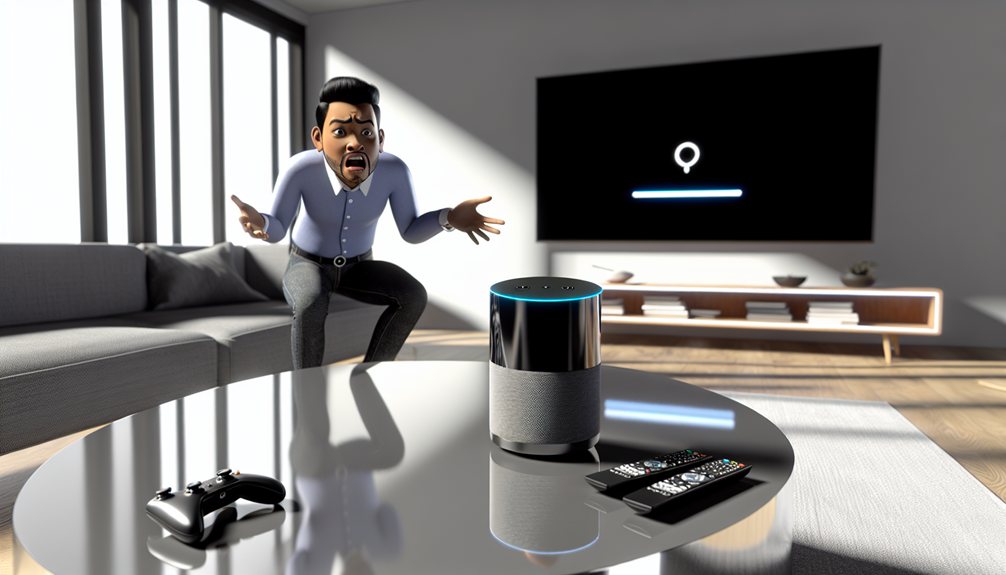Issues With Voice Control Devices
Voice control devices come with several issues that can affect your experience. Privacy concerns arise as voice commands are stored, often without your clear consent. Misinterpretation of commands can lead to frustration, especially with language diversity and accents. Plus, these devices depend heavily on stable internet connectivity, which can disrupt functionalities. Compatibility issues with smart home devices can also limit your options. If you want to explore these challenges further, there’s much more to uncover.
Key Takeaways
- Privacy concerns arise from voice commands being processed and stored, potentially leading to data breaches and unauthorized access.
- Misinterpretation of commands frequently occurs, causing frustration due to ambiguous wording and feedback loops.
- Limited language and accent recognition hinder device performance, making it difficult for users from diverse linguistic backgrounds to communicate effectively.
- Voice control devices depend heavily on stable internet connectivity, with outages or bandwidth limitations disrupting functionality.
- Compatibility issues with smart home devices arise from inconsistent protocols, limiting user choices and complicating navigation across multiple platforms.
Privacy Concerns and Data Security
Have you ever wondered what happens to your data when you interact with voice control devices? Each time you speak, your commands are processed and stored, raising serious privacy concerns.
Companies often use data encryption to protect your information, but it’s essential to understand how effective these measures are. Without proper data handling practices, your voice recordings could be vulnerable to breaches.
Additionally, user consent plays an important role in this equation. Often, you might unknowingly agree to share your data, granting companies access to your personal information.
To safeguard your privacy, always check the settings and permissions of your voice control devices. Staying informed empowers you to make better choices about your data security in this increasingly digital age.
Misinterpretation of Commands
While you might expect voice control devices to understand your commands perfectly, misinterpretations can frequently occur, leading to frustration.
Command ambiguity often arises when your words have multiple meanings, causing the device to misinterpret your intent. For instance, asking it to “play rock” could result in it playing rock music or a rock-related podcast, depending on its interpretation.
Feedback loops can exacerbate this issue; when you repeat commands in different ways, the device may still struggle to grasp what you mean. The result? A cycle of misunderstanding that leaves you feeling exasperated.
To improve your experience, try being as specific as possible with your commands, minimizing ambiguity to enhance the likelihood of accurate responses from your device.
Limited Language and Accent Recognition
As voice control devices become increasingly integrated into our daily lives, their limitations in language and accent recognition can be a significant hurdle.
You might find that these devices often struggle with language diversity, failing to understand various dialects or regional phrases. This can be frustrating, especially if you speak a language that’s less common or if your accent doesn’t match the device’s programming.
Accent variability adds another layer of complexity; what sounds clear to you might confuse the device. This lack of adaptability can limit the user experience and make interactions less efficient.
Ultimately, to fully embrace voice technology, developers must enhance recognition capabilities, ensuring that everyone can communicate effectively, regardless of their linguistic background or accent.
Dependency on Internet Connectivity
Although voice control devices offer convenience, their heavy reliance on internet connectivity can pose significant challenges. You might find that when your internet connection dips due to bandwidth limitations, your device struggles to understand commands or takes longer to respond. This can be frustrating, especially when you’re relying on it to control your smart home or access information quickly.
Furthermore, service outages can leave you unable to use your device altogether, disrupting your daily routine. When these issues arise, you may feel a sense of helplessness, as basic tasks become more complicated.
Ultimately, while these devices enhance your life, their dependence on a stable internet connection can lead to unexpected interruptions and diminish the seamless experience you expect.
Compatibility Issues With Smart Home Devices
When relying on voice control devices, you may encounter compatibility issues with various smart home products. These interoperability challenges arise from device fragmentation, making it difficult to achieve seamless control.
Here are some common issues you might face:
- Inconsistent protocols: Different devices may use varying communication standards, preventing them from working together.
- Limited ecosystems: Some voice assistants only support specific brands, restricting your choices.
- Frequent updates: Updates can cause previously compatible devices to lose functionality.
- Poor user interfaces: Maneuvering through settings across multiple apps can be frustrating and confusing.
Lack of Personalization and Context Awareness
While voice control devices offer convenience, they often fall short in personalization and context awareness. You might find that when you ask a device for recommendations, it doesn’t quite understand your preferences or the situation you’re in.
This lack of contextual understanding can lead to generic responses that don’t cater to your unique needs. For instance, if you request a playlist while cooking, it may suggest high-energy tracks instead of something more relaxed.
Without the ability to learn from past interactions or adapt to changing user preferences, these devices can feel impersonal. Ultimately, a more nuanced approach to context awareness could enhance your experience, making interactions smoother and more intuitive.
Technical Glitches and Performance Issues
Even as voice control devices become more integrated into daily life, they’re not immune to technical glitches and performance issues that can frustrate users.
These problems often stem from a combination of software updates and hardware limitations. Here are some common issues you might encounter:
- Microphone sensitivity: Sometimes, your device may misinterpret commands due to background noise.
- Connectivity problems: A weak Wi-Fi signal can lead to delays or failures in executing commands.
- Software bugs: Frequent updates can introduce new glitches, causing devices to behave unexpectedly.
- Compatibility issues: Older hardware may struggle with the latest features, limiting overall performance.
Staying aware of these potential issues can help you troubleshoot and enhance your experience with voice control technology.
About Us
We understand that electrical issues can be stressful and overwhelming. That’s why we are here to lend a helping hand and provide you with the best electrical services in town. As a team of experienced electricians, we take pride in our ability to solve any electrical problem with precision and care.
Pages
Follow us
© 2025 By Electrician Fort Lauderdale Today







